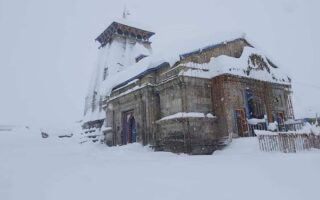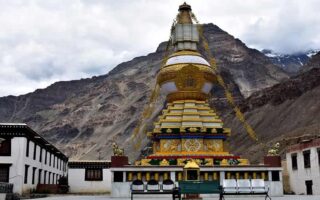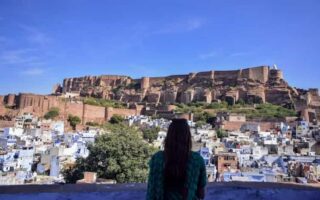History and heritage are two pillars on which India stands. This country has seen a steady amalgamation of religions, rulers and culture over thousands of years. While the empires end the monuments stand still carrying it’s age old history and legacy. While the Taj Mahal, one of the seven wonders of the world, adorns the crown there are many more monuments with great architectural value and daunting history which are listed in UNESCO heritage sights across India. Here is a quick guide to ten most famous monuments of India with immense historical and architectural value.
India Gate
- Address: Kartavya Path, India Gate, New Delhi- 110001
- Designed by: Edwin Lutyens
- Built in: 1921
- Timing: 9:00 AM – 5:00 PM
- Entry Fee: No Entry Fee
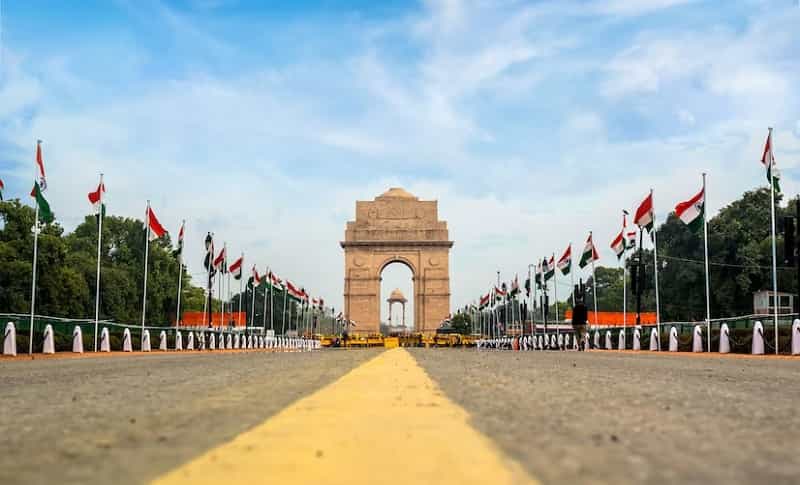
India Gate, the monument built to keep the memoirs alive in our mind of the soldiers who lost their lives in fighting for British army in World War 1. The monument consists the names of both Indian as well as British soldiers. Designed by Edward Lutyens the monument stands erect amidst the National Capital. “Amar Jawan Jyoti” (the immortal flame) was added later in it to commemorate the soldiers who fought against Pakistan in the Indo-Pak war of 1971. The fire keeps on burning day and night since then. The monument is a great point of attraction in country capital Delhi and is also a popular hang out area for the locals.
Golden Temple
- Address: Amritsar, Punjab, 143006
- Built by: Guru Ram Das
- Built in: 1599
- Timing: 4:00 am – 10:00 pm
- Entry Fee: Free

This beautiful Gurudwara is located in Amritsar city of Punjab. The main shrine is created with a blend of both Hindu and Islamic architecture. Around 750 kg of gold is used to build the temple. The tourists here are given a few minutes to witness the inner sanctum and are later on gently told to move so that other people can also get the chance to have a look at this beauty. The Guru Granth Sahib is installed during morning here and during night it is returned to Akal Takht. The place is simply a piece of beauty and tranquility and here you will definitely feel the divine presence of God.
Taj Mahal
- Address: Tajganj, Agra, Uttar Pradesh 282001
- Built by: Shah Jahan
- Built in: 1632
- Timing: 5:00 am – 6:30 pm
- Entry Fee: Free
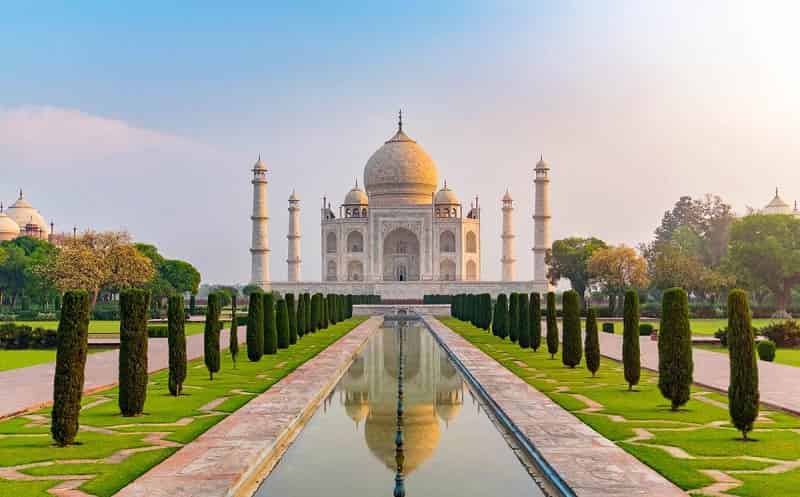
Taj Mahal, one of the seven wonders of the world is a piece of unmatched beauty. The whole monument is built of white marble and has perfect symmetry. With a total number of twenty-two small domes, the monument is located on the south bank of river Yamuna. Urdu verses are inscribed on it so beautifully that it makes us think about utter dedication and perfection of the workers at those times with such limited resources. This masterpiece was built in the year 1631 under the reign of emperor Shahjahan in the memory of his beloved wife Mumtaz Mahal. The beauty of the monument leave each and every visitor spellbound.
The monument’s visiting hours vary from season to season but is generally opened from sunrise to sunset. Also, a very important thing to keep in mind is that it remains closed on Fridays. Book a taxi or tanga to reach to this place from the station. This place is worth visiting at least once in a lifetime.
Red Fort, Delhi
- Address: Netaji Subhash Marg, Lal Qila, Chandni Chowk, Delhi 110006
- Built by: Shah Jahan
- Built in: 1638
- Timing: 7 a.m. to 5 p.m.
- Entry Fee: Rs.35 of Indians and Rs.500 for foreigners
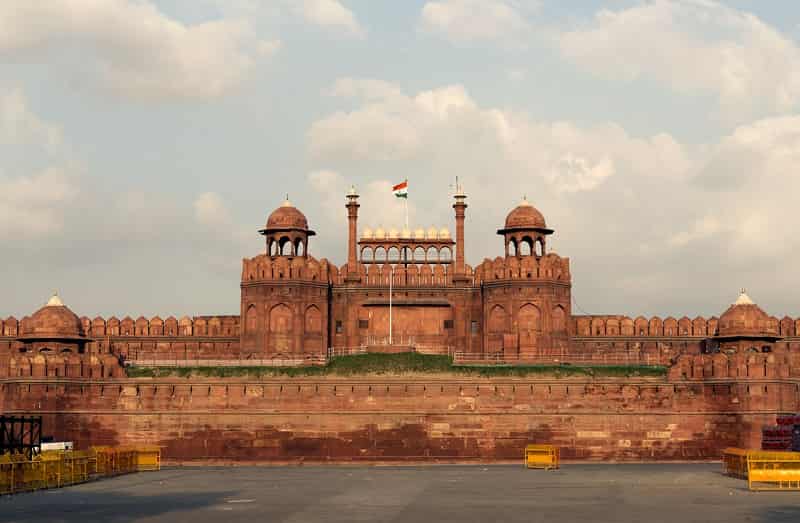
Red Fort was built by Mughal Emperor Shahjahan. It took straight nine long years to build this huge fort. The Fort was built after Delhi was made capital after Agra during Mughal times. This fort was built basically to serve for the residential purpose of the important people of Mughal times. Built of red sandstone the monument stands straight in the northern part of the National Capital. The place is just amazingly mesmerizing and one must pay a visit over there to have a glimpse of the architecture of Mughal times.
Imambara, Lucknow
- Address: Machchhi Bhavan, Lucknow, Uttar Pradesh 226003
- Built by: Asaf-ud-Daula, Nawab
- Built in: 1784
- Timing: 6:00 AM to 5:00 PM
- Entry Fee: Rs.25 (Indian), Rs.500 (Foreigners)
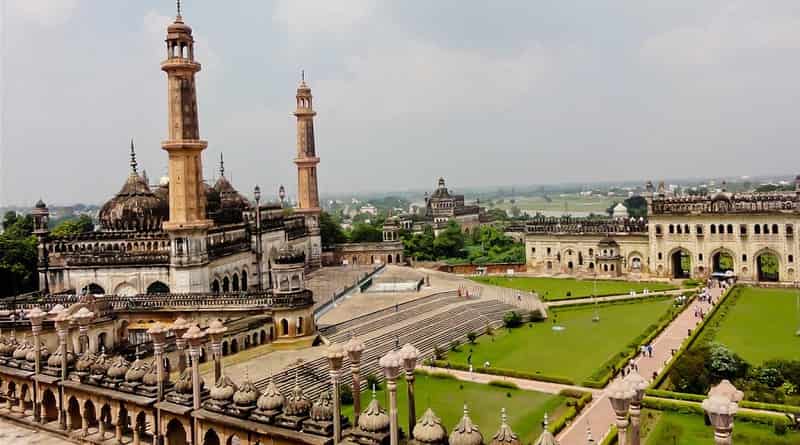
We are talking about Lucknow and we are not giving any historical touch to it is like preparing daal without tadka. Imambara, one of the oldest monuments in the country and the beauty is absolutely astonishing. On the upper floor, you’ll find yourself in a world where you’ll be having no idea of where are you going, you’ll enter in ‘Bhool Bhulaiya’. You have a cent percent chance of getting lost. Children, as well as youngsters, find this place super amazing. Imambara is a must go and you cannot afford to miss this beauty!
Agra Fort, Agra
- Address: Rakabganj, Agra, Uttar Pradesh 282003
- Built by: Akbar
- Built in: 1565
- Timing: 6:00 am – 6:00 pm
- Entry Fee: Rs.35 (Indian), Rs.550 (Foreigners)
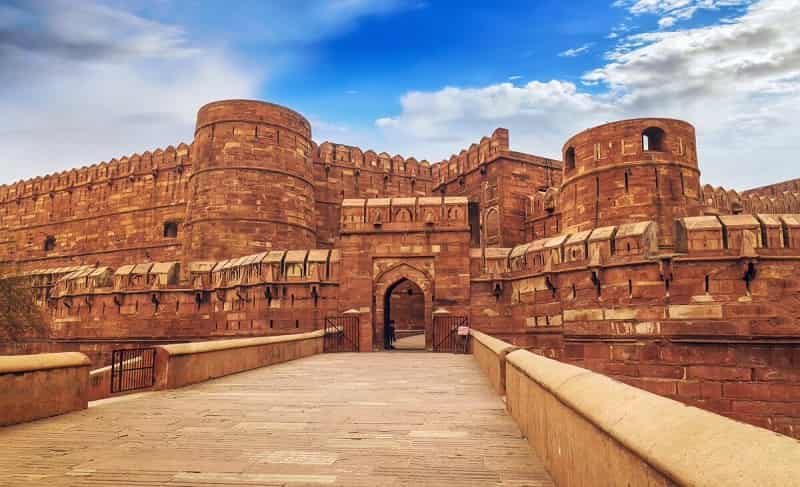
While visiting Taj Mahal you can visit quite a notable number of places of historic importance, Agra Fort is one of them. It is also a UNESCO world heritage site. It is just 2.5km away from the Taj Mahal. The site is famous for its archaeological history. The fort is a crescent in shape with a straight wall facing the river. The major part of the monument is built of red sandstone. The fort has two gates “Lahore Gate” and “Delhi Gate”. However the “Delhi Gate” is not opened for public use, the tourists enter through “Lahore Gate” which is also known as “Amar Singh” gate. If you are visiting Agra then you can’t afford to miss this beauty and it should be on your list by now if you are planning for your forthcoming vacations.
Qutub Minar, Delhi
- Address: Mehrauli, New Delhi, 110030
- Built by: Qutub-ud-Din Aibak
- Built in: AD 1199
- Timing: 7 AM to 5 PM
- Entry Fee: Rs.40 (Indian), Rs.500 (Foreigners)
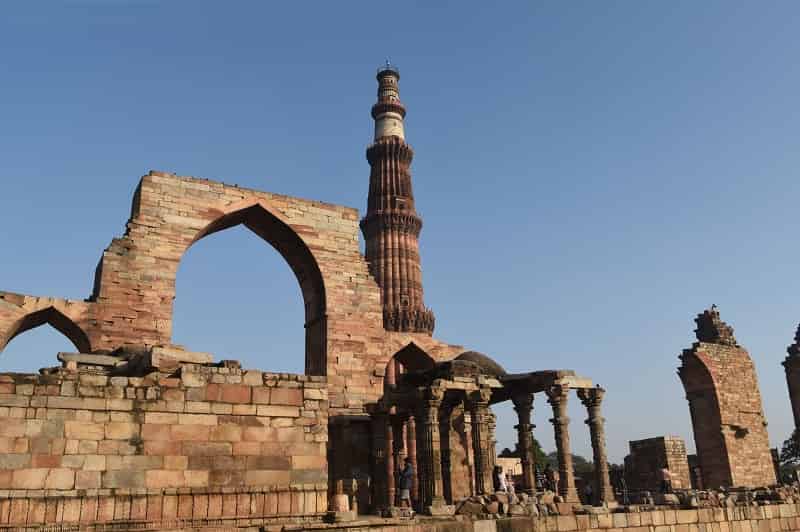
This 73m tall minaret stands straight in Delhi and was built by the first Muslim ruler of India Qutab-ud-din Aibak. The whole structure was not completed during his lifetime so later on it was completed by its successors. The Minar is built of red sandstone at the base and at the top, it is made of marble and sandstone. The beauty of the Minar is really unmatched. It remained one of the tallest structures of the world for sometimes too. One must pay a visit to watch this beauty at the national capital.
Akbar’s Tomb, Agra
- Address: Sikandra, Agra, Uttar Pradesh 282007
- Built by: Jahangir
- Built in: 1605–1613
- Timing: 06:00 am – 06:30
- Entry Fee: Rs.30 (Indian), Rs.310 (Foreigners)
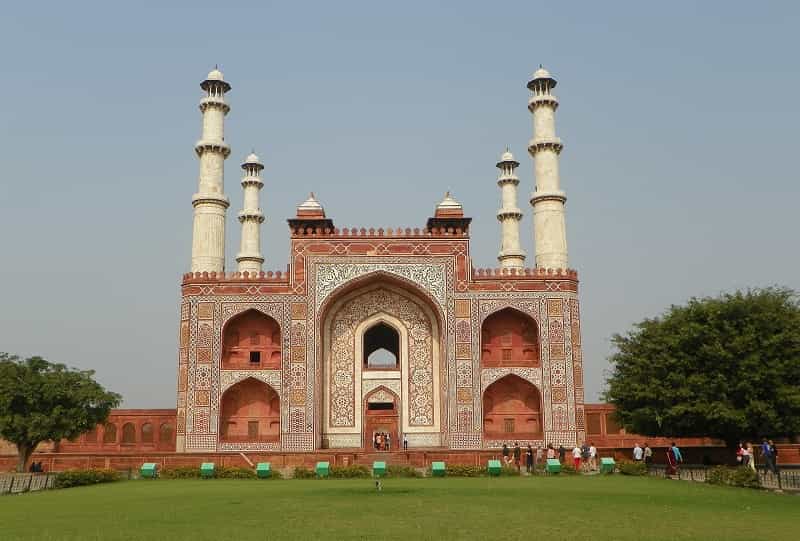
The famous Mughal emperor Akbar’s last resting place is what we know as Akbar’s tomb. The monument is located 13km away from Agra in Sikandra. This piece of beauty is made of red sandstone. People who come to explore Agra do not leave this place unvisited. The monument is located in the mid of lush green fields. One of the very notable facts about the monument is that the monument was that it was planned by Emperor Akbar himself. Different names of Allah are inscribed over it. If you are visiting Agra.
Gateway Of India
- Address: Apollo Bandar, Colaba, Mumbai, Maharashtra 400001
- Architect by: George Wittet
- Built in: 1911
- Timing: 24 hours
- Entry Fee: No entry fees
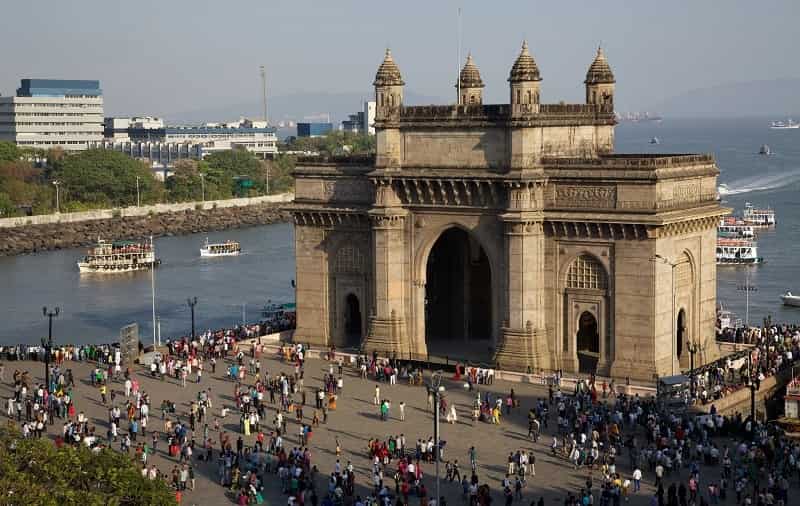
Gateway of India was built in 1911 to honour the visit of King George V and Queen Mary to Mumbai. Today, it is one of the most central attractions of Mumbai. Travellers from all across the world who visit Mumbai don’t forget to check out this beautiful monument, located on the seashore in the Apollo Bunder area, South Mumbai…
It is 48 feet in diameter and 83 feet above the ground. The cost of construction was at that time went up to 22 lakh. At present, if the construction of such type of Gateway takes place, it could be in crores. The monument is the live example of the rich architecture of Roman and the 16th century architecture of Gujarat… The monument is closer to the famous Taj Hotel Mumbai. From the evening to late night, the area gathers travellers and locals.
Fatehpur Sikri
- Address: Fatehpur Sikri, Uttar Pradesh 283110
- Built by: Akbar
- Built in: 16th century
- Timing: 06:00 am – 06:00 pm
- Entry Fee: Rs.40 (Indian), Rs.550 (Foreigners)
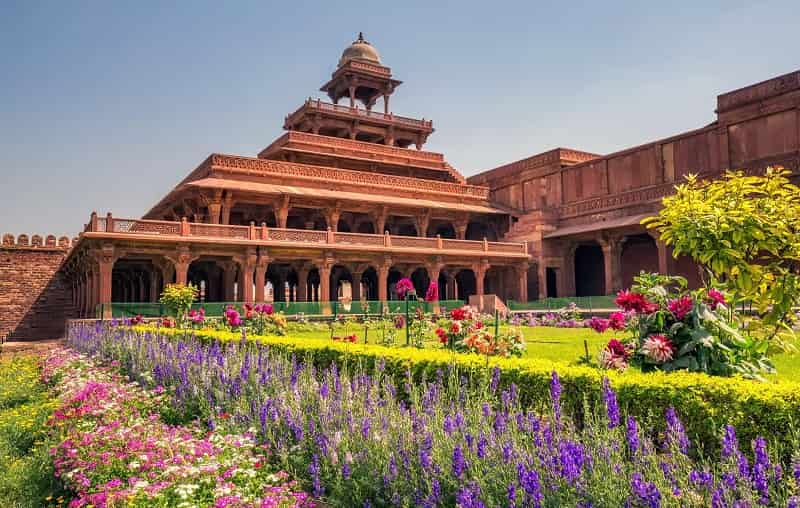
Fatehpur Sikri is a site which displays a number of buildings of historical importance. It is included in one of the world heritage sites and often witnesses the presence of a number of visitors. Buland Darwaza is a famous place which was built by Mughal Emperor Akbar. On an all how the experience of the placed can be summed up is that you will clearly feel the beauty of the architecture of Mughal times by having an insight to amazing places of historic importance. Fatehpur Sikri should be a must visit while exploring Agra.
Humayun’s Tomb
- Address: Nizamuddin East, Mathura Road Delhi
- Built by: Biga Begum
- Built in: 1569-70
- Timings: 6 AM to 6 PM
- Entry Fee: Rs.40 (Indian), Rs.600 (Foreigners)
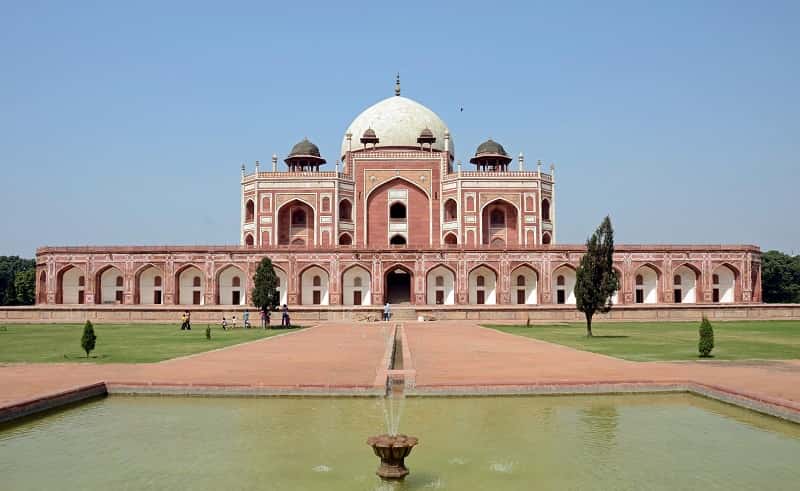
As the name suggest this tomb belongs to the Mughal Emperor, Humayun. This tomb was made by Humayun’s begum, Haji Begum in the loving memory of her husband, in the year 1569-1570. This was designed by Mirak Mirza Ghiyath, the well-known Persian architect. This was the first monument which was created out of red sandstone and marble, a combination of red sandstone and marble was used which gave it a perfect blend of two different cultures.
The tomb was the first garden-tomb located on the Indian subcontinent and is located in Nizamuddin East; Delhi, India Purana Qila (Old Fort).This was the first monument which was created out of red sandstone extensively. In 1993 this became a UNESCO World Heritage Site and since then has a lot of renovation and restoration work has been done to preserve the monument.
This is visited by a large many number of foreign as well as domestic travelers. This tomb is surrounded 12 hectares of formal gardens. The other tombs in the vicinity are those of Haji begum herself and Humayun’s favorite barber.
This was truly a very well fine example of Lodi architecture through a gate to the left of the entrance. The majestic Mughal Garden is the place to be in especially during the sunset hours.
Hawa Mahal
- Address: Johari Bazar Road, 302002 Jaipur, Rajasthan
- Built by: Maharaja Sawai Pratap Singh
- Built in: 1799
- Timings: 9.00 AM – 5.00 PM
- Entry Fee: Rs.50 (Indian), Rs.200 (Foreigners)
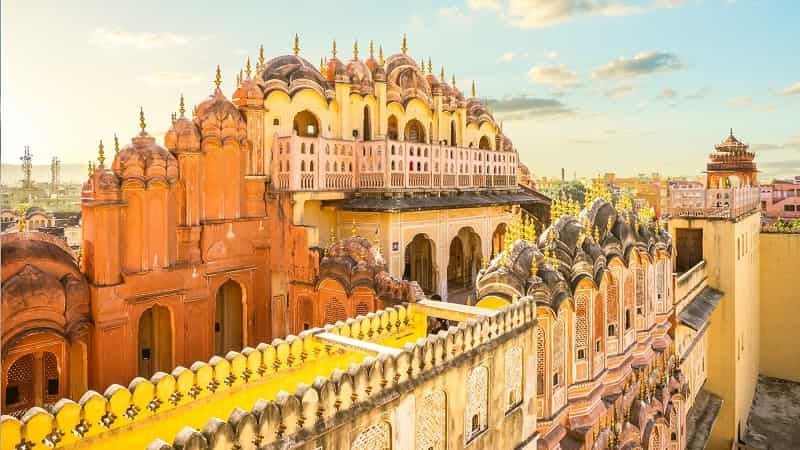
Hawa Mahal is a world-famous edifice, Jaipur can be identified with. This is a five-storey architectural wonder, built with pink sandstone in the shape of a honeycomb hive. It was constructed by Maharaja Sawai Pratap Singh in 1799 as a sitting space from where ladies of the royal household could witness the life, processions and proceedings of the city. From the top of the Hawa Mahal, you can extend your gaze over the stunning views of Jantar Mantar and the City Palace on one side and the Sireh Deori Bazaar on the other.
There is a small museum inside the premises, which displays miniature paintings and rare remains from the glorious period of history including ceremonial armour. The museum opens for public display between 9am and 4.30pm (Sat through Thu). You can enter the Hawa Mahal from the back of the complex, where the only entrance lies. To get here, you have to go left from the face of the Hawa Mahal and reach the edge of the monument. Then turn right and take the first right again through an archway leading to the gate.
Also Read: Most Famous Heritage Palaces & Hill Forts in Rajasthan
Sanchi
- Address: District Raisen, Sanchi, MP, 464661
- Built by: Mauryan Emperor Ashoka
- Built in: 3rd century BCE
- Timings: 6.30 am to 6.30 Pm
- Entry Fee: Rs.50 (Indian), Rs.600 (Foreigners)
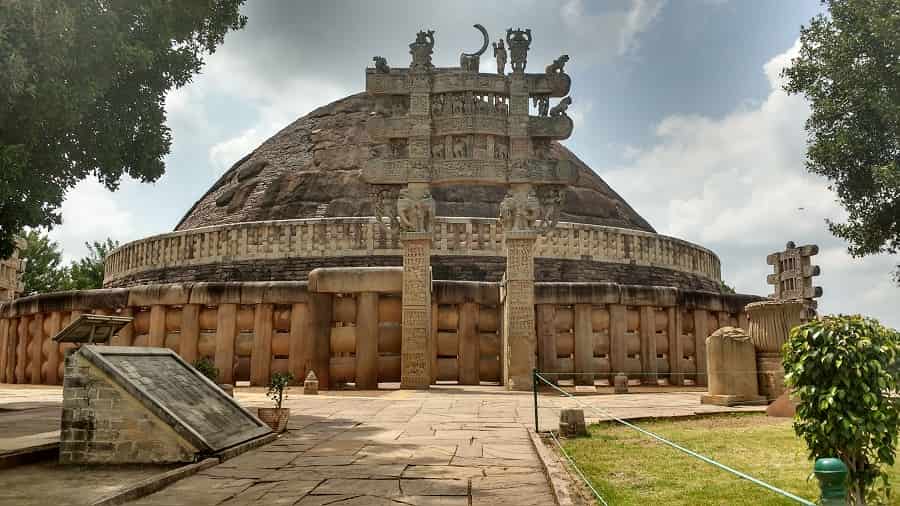
Sanchi is 46 kms from Bhopal. There is a Buddhist structure at the top of a rounded hill. This is one of the oldest Buddhist structures is India. Sanchi was the birthplace of Emperor Ashoka’s wife. After the war of Kalinga, Ashoka turned towards Buddhism and decided to serve the humanity. This Great Stupa at Sanchi was built by him only. After Ashoka’s rule the Hinduism prevailed in all these regions and therefore no one really focused on this site. In 1818, a British Officer rediscovered this site and since then it became quite popular. Sanchi is easily approachable from Bhopal and is hardly a one hour drive from the city. This is a nice comforting place for the visitors who seek peace and relaxation.
Mahabodhi Temple
- Address: Bypass Rd Bodhgaya, Bihar, 824231
- Built by: Emperor Asoka
- Built in: 3rd century B.C.
- Timings: 5:00 AM – 9:00 PM
- Entry Fee: Free
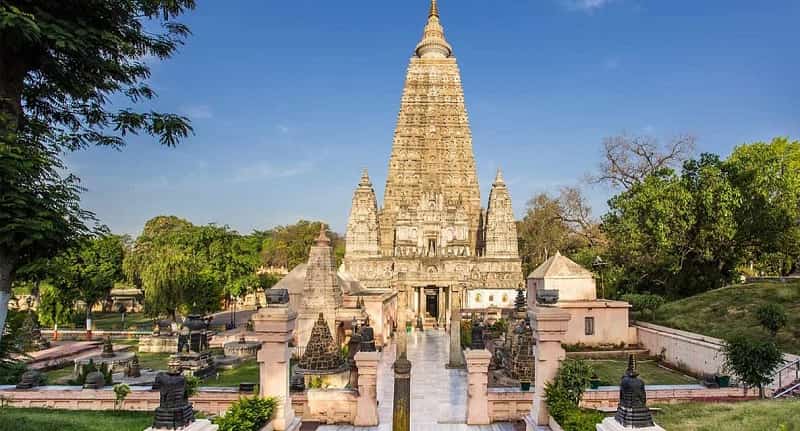
This is the epicenter of Bodhgaya and is located quite near to the place where Buddha attained enlightenment. This is a World Heritage Site and therefore an important place to visit. The admission can be made free of cost and it remains open all days of the week. The temple has a long history and tells many stories of religious and spiritual world.
Mahabodhi temple was constructed in the 6th century Ad on top of the temple constructed by Emperor Ashoka around 800 years earlier. The temple was destroyed by the Muslim invaders in the eleventh century and had to be rebuilt multiple times. The last restoration was done in the year 1882. There is 50 meters pyramidal spire at the top of the temple and there is a 2 meters high image of Buddha. The overall architectural work is very artistic. There are stone railings around the temple that belong to 72 BC and have still been well preserved. There is the famous Bodhi tree also. The famous spot of Buddha’s enlightenment is located between the tree and the rear of the temple. This spot marks one of the most important places in history of religions. It is also referred to as Vajrasan which means a Diamon Throne.
The overall temple complex is serene and captures your heart while providing the peace of mind and painting the colors of spirituality in your mind. There is a famous lake called as Muchalinda Lake which is surrounded by prayer flags and a cobra statue rising from the centre of it. It is believed that Buddha meditated here on the sixth week of enlightenment and was protected by the snake god from the various storms that occurred at that time. The place is not only important for Buddhists but people from all religions come here to get the spiritual value. Buddha believed in equality and that is the value associated with this place. You can enjoy a walk around the temple that will help you to release all the worries. There are various other things to see inside the complex.
Victoria Memorial
- Address: 1, Queens Way, Maidan, Kolkata, West Bengal 700071
- Architect: William Emerson, Vincent Esch
- Built in: 1906
- Timings: 10 am – 5 pm
- Entry Fee: Rs.20 (Indian), Rs.200 (Foreigners)
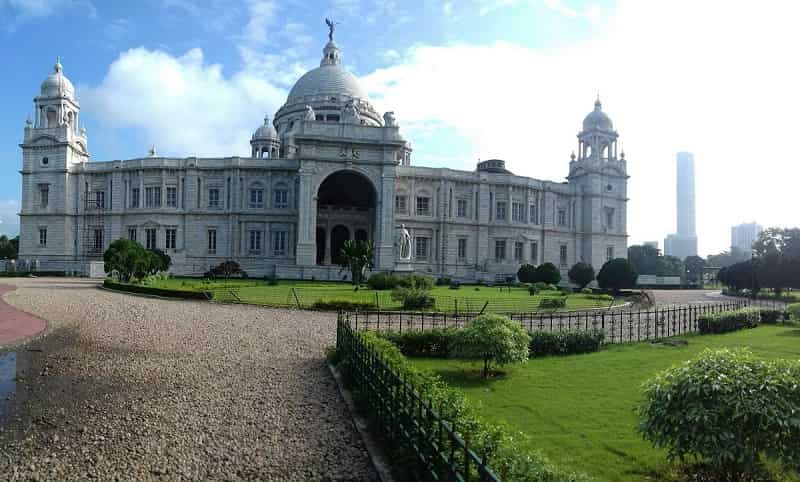
Located in the heart of Kolkata, Victoria Memorial is an incredibly beautiful and vast building, constructed in the memory of Victoria, Empress of India. The use of white marble and British architecture makes it look like a fusion of US Capital and Taj Mahal. This architectural masterpiece would have counted amongst India’s greatest buildings if some Mughal emperor had got it constructed in the memory of his beautiful princess. Though the building was designed in 1901 to honor Queen Victoria on her diamond jubilee, the construction could only complete in 1921, 20 years after Queen’s death.
As you enter the first hallway, the statue of King George V, facing his wife Mary, welcomes you. In his camp breeches, he resembles more to a queen. To the left, there are hardboard hoardings that display prints and paintings and jar with the real splendor of the gallery. The amazing central chamber guides through to the Kolkata Gallery, displaying the magnificence of great colonial-era history of Kolkata. The building offers a delightful view even from the outside. The panoramic photogenic reflection of the building in ponds from the northeast is worth-admiring. You can pay your way (Rs. 4 only) to get access to the large, well-tended park. You can enter either from the north or the south gates, having ticket booths at ends.
Jallianwala Bagh
- Address: Golden Temple Rd Amritsar, Punjab-143001
- Owner: Jallianwala Bagh National Memorial Trust
- Built in: 1951
- Timings: 6:30 am to 7:30 pm
- Entry Fee: Free
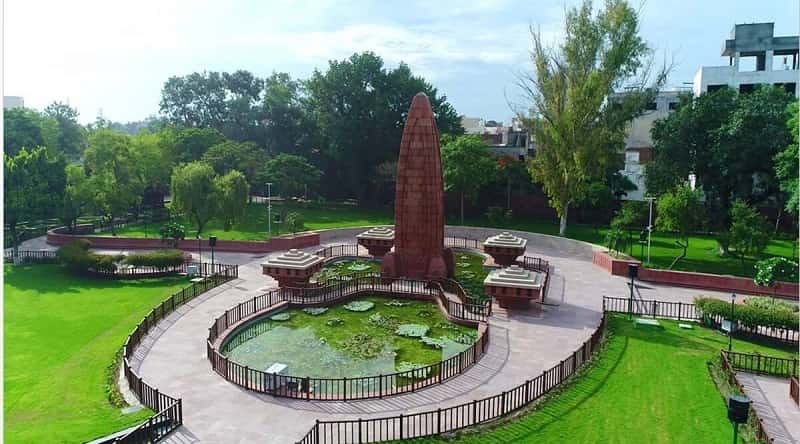
This is a park in Amritsar, Punjab (6am-7pm summer, 7am-6pm winter) where more than two thousand people were killed and wounded by British soldiers under the orders of General Dyre. The bullet marks in the walls have been preserved and are visible to the naked eye. Also there is a well here in which hundreds of people jumped to avoid these bullets. There is a martyr’s gallery (9am- 5pm summer, 10am-4pm winter) here built to honor those who died here.
Gwalior Fort
- Address: Gwalior, Madhya Pradesh 474008
- Built by: Suraj Sen
- Built in: 3rd century
- Timings: 6 am – 5:30 pm
- Entry Fee: Rs.75 (Indian), Rs.250 (Foreigners)
- Time Required: 2-4 hours
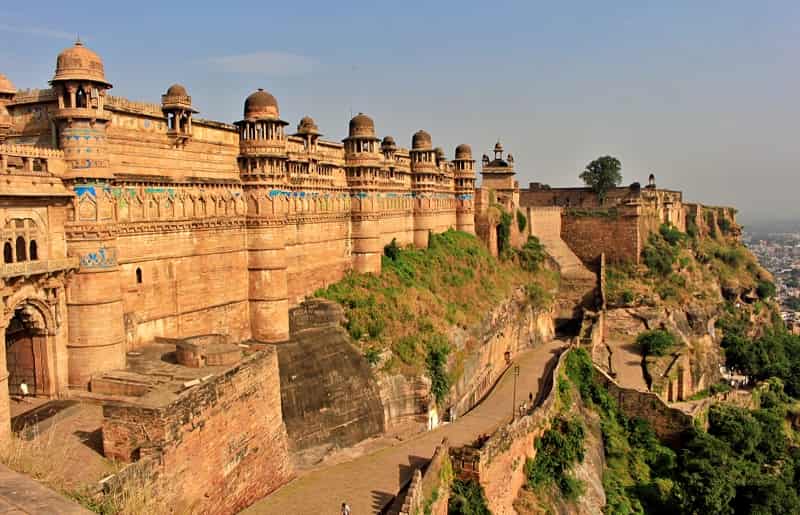
Gwalior fort with its beautiful architecture and amazing location will give you an idea how carefully it was built and how it had been the center of many clashes that took place in the city. Two paths to the fort which is located on the hill top and therefore one has to climb the steep trek to reach there. There are two gates from the eastern and western gates respectively. There are rock sculptures throughout the way to the palace.
The fort remains open on all days for the visitors and one needs to buy the ticket to make their entry in to the fort. In order to use the camera, extra charges have to be paid. The fort is also a part of Scindia School established by Maharaja Madhav Rao Scindia in 1897. If you are visiting Gwalior, this fort is undoubtedly the first place that one should visit there.
Must Read: Most Popular Forts and Palaces in Madhya Pradesh
Charminar
- Address: Charminar Rd, Ghansi Bazaar, Hyderabad, 500002
- Built by: Sultan Mohammed Quli Qutb Shah
- Built in: 1591
- Timings: 9:30 am to 5:30 pm
- Entry Fee: Rs.20 (Indian), Rs.250 (Foreigners)
- Visit Duration: 30 minutes
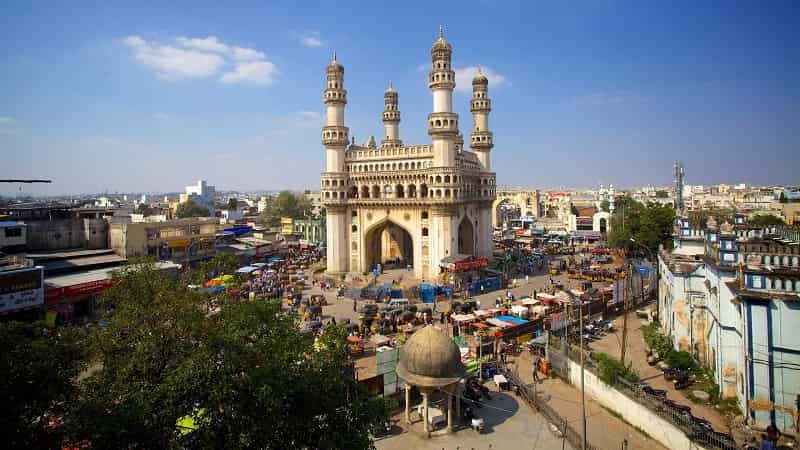
Today Charminar is known as a Global Icon and comes `in the list of India’s most recognizable structures. Charminar was built by Mohammed Quli Qutb Shah in 1591 to the founding of Hyderabad during the water shortage in Golconda. The Charminar was initially designed to serve the purpose of a Mosque and a Madrasa. Not many people would be aware of the fact that Charminar was keeping in mind that would be right in the center of the city of Hyderabad. It’s a magnificent standing four – column with four arches in all four cardinal directions. It is 56m high and 30m wide.
The Charminar is currently being maintained by the Archaeological survey of India. The topmost column is not open for public, however the 2nd floor is Hyderabad’s oldest mosque. Special illumination during the evening hours makes it very attractive. The lanes around the Charminar are also the center for pearl trade in India. Laad Bazaar towards the west of Charminar is known for perfumes, fabrics, and musical instruments, kitchen implements and even second hand sarees. There are almost close to 14000 shops in the market surrounding the Charminar. The entry timings for Charminar are from 9:00am to 5:30pm. Indians have to pay an entry fee of Rs 5 and foreigners have to pay an amount of Rs 100.
Mysore Palace
- Address: Sayyaji Rao Road Mysore, Karnataka-570001
- Built by: Henry Irwin
- Built in: 1897
- Timings: 10 am – 5:30 pm
- Entry Fee: Adults Rs.100/-, Children Rs 50/-
- Visit Duration: 2 to 3 hours
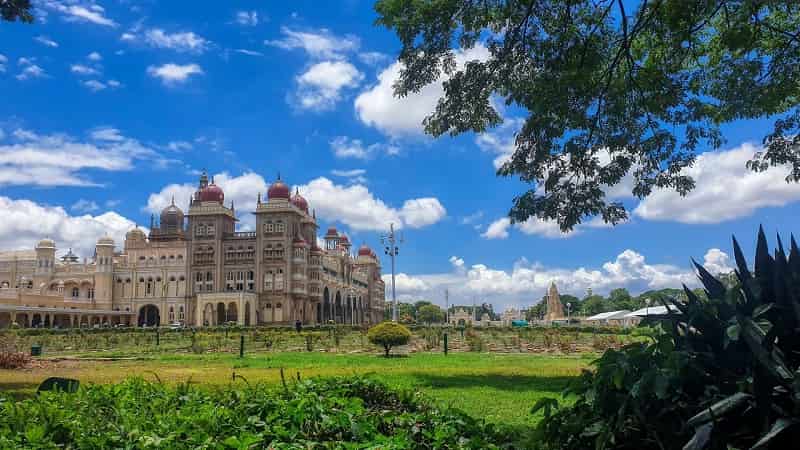
The Mysore palace has gone down in the History of India and is well known all over the world as an Indo-Saracenic palace. This is the very place where the king off Mysore had his seat. The palace was designed by the English architect Henry Irwin, and was actually completed in 1912 and costed almost Rs 4.5 million. The interior of the palace has the look of a kaleidoscope of stained glass reflects on the roof, beautifully carved wooden doors and mosaic floors and the paintings depict the life in Mysore during the old days.
There are Hindu temples located within the premises of the palace in the grounds which include the Sri Shweta Varahaswamy Temple. The gateway tower of the temple seems to bear a strong resemblance to the Sri Chamundeshwari Temple, located on the Chamundi Hill.
The Royal House of Mysore shop which is known for selling the exclusive designs of saris and dupattas is also located within the premises of the palace. Camera is not allowed within the premises of the palace and has to be deposited at the entrance gate itself. Once can only click pictures of the exteriors of the palace. There is an entry fee of Rs 20/- and the timings for visiting the palace are from 10:00am to 5:30pm.
Hampi
- Address: Vijayanagara district, Karnataka, India
- Built by: Devaraya II
- Built in: 15th century
- Timings: 6 AM and 6 PM
- Entry Fee: Rs.30 (Indian), Rs.500 (Foreigners)
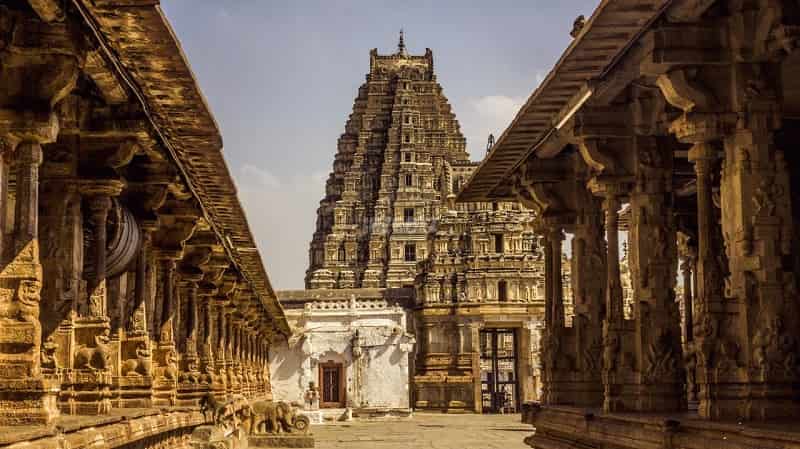
Hampi displays the ruins of a glorious era, which appears unreal but amazingly captivating. The unearthly landscape of this crumbling glory will leave you spellbound the very moment you catch a view of it. There are loads of massive boulders resting precariously across miles of smooth and undisturbed terrain. There are a series of banana plantations, paddy fields and jade-green palm groves grown over the terrain. The blue-painted sky featuring fluffy white cirrus enhances the effect of magical atmosphere. Hampi, a World Heritage Site, allows you to immerse yourself in time-induced ruins or enjoy the vagaries of nature. More you stay here more you wonder how millions years of volcanic effect and attrition could have led to the creation of this bewitching landscape.
Hampi experiences high tourist traffic during November to March season. Two main accessing points to the vestiges are the Southern village of Kamalapuram and Hampi Bazaar in Karnataka. White Hampi Bazaar is a traveller’s ghetto for its budget lodges, shops and restaurants; Kamalapuram houses the archaeological museum and a government-run hotel. The Sacred Centre, located around Hampi Bazaar; and the Royal Centre, lying towards Kamalapuram are the two main parts of the ruins. The historic village of Anegundi lies to the northeast across the Tungabhadra River.
